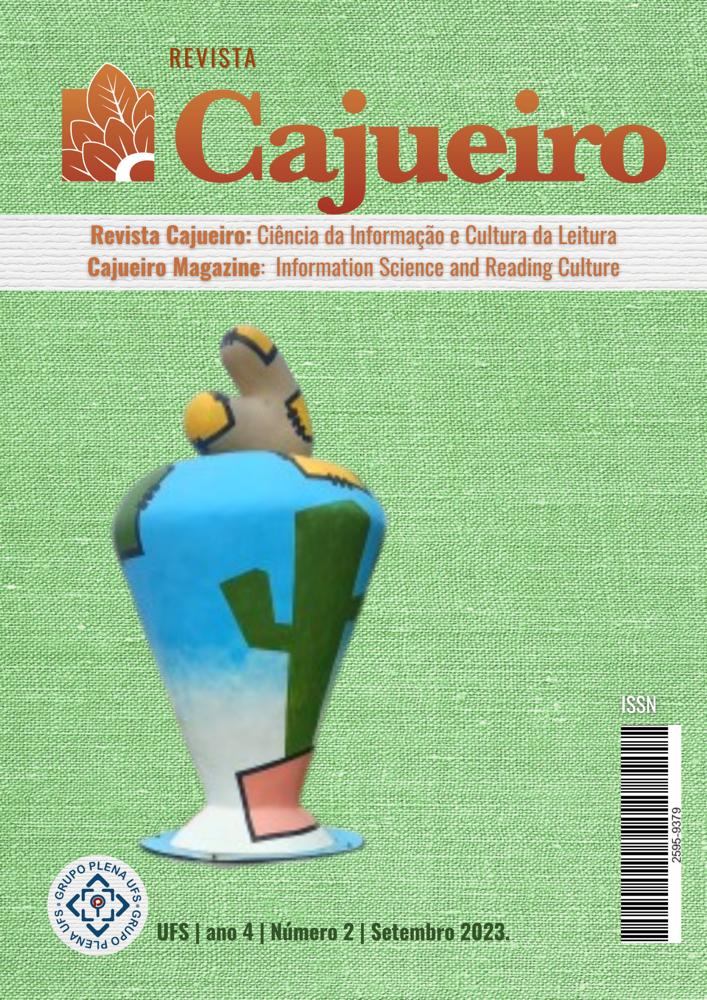Memory, testimony and representation
a comparative analysis of the works Que bom te ver viva, by Lúcia Murat and O que é isso, companheiro? by Fernando Gabeira
Keywords:
Memory; Testimony; Dictatorship; Resistance.Abstract
The purpose of this research is to try to establish a relationship between the works Que bom te ver viva, by Lúcia Murat and O que é isso, companheiro?, by Fernando Gabeira, in order to investigate how the military dictatorship, through Institutional Acts and violence, curtailed individual and collective freedoms and how this stance fostered the emergence of organizations that, through armed struggle, opposed state repression. Therefore, it is of interest in this article to verify how individual memory becomes collective memory through testimony and how this is capable of elaborating a representation of the temporal cut between 1968 and 1979, when dealing with the hierarchization of opposing militias, the organization of joint actions, female participation and torture. For that, we will use the two works that will be approached according to the theories of Nichols (2005), about the conception of the documentary and De Marco (2004), to analyze the memorialistic novel and the testimony, Chartier (1989), for the social representations, in order to verify at what point the audiovisual and the book converge or diverge.
Downloads
References
BUCCI, Eugênio; AFFINI, Marcelo. O incrível sequestro de Charles Elbrick. In: Revista Super Interessante, 1994. Disponível em: https://super.abril.com.br/historia/o-incrivel-sequestro-de-charles-elbrick/. Acesso em: 17 nov. 2020
CARVALHAL, Tânia Franco. Literatura Comparada. 4. Ed. rev. e ampliada – São Paulo: Ática, 2006.
CHARTIER, Roger. A História Cultural: entre Práticas e Representações. Lisboa/São Paulo: Difel, 1989.
DE MARCO, Valéria. A literatura de testemunho e a violência de Estado. Lua Nova, São Paulo, n. 62, p. 45-68, 2004. Disponível em: < http://www.scielo.br/pdf/ln/n62/a04n62.pdf. Acesso em 14 out. 2020
GABEIRA, Fernando. O que é isso, companheiro? Rio de Janeiro: Codecri, 1981.
HALBWACHS, Maurice. A memória coletiva. São Paulo: Vértice, Editora Revista dos Tribunais. 1990.
LEITE, Paulo Moreira. O que foi aquilo, companheiro? In: REIS FILHO, Daniel Aarão et al. Versões e ficções: o sequestro da história. São Paulo: Fundação Perseu Abramo, p. 51-60, 1997.
MACEDO, Lucíola Freitas de. O testemunho, entre o poético e o político. Cult, São Paulo, n. 199, mar, 2015.
MEDEIROS, Ângela Carneiro; RAMALHO, Thalita Aragão. Que bom te ver viva – Memória das Mulheres. O Olho da História, n. 14, Salvador (BA), junho de 2010. http://oolhodahistoria.ufba.br/wp-content/uploads/2016/03/angela.pdf. Acesso: 02 dez. 2020
NICHOLS, Bill. Introdução ao documentário. Campinas, SP: Papirus, 2005.
NORONHA, Danielle P. Entre a rebeldia e a ingenuidade: representações sobre as juventudes em O que é isso, companheiro? e Batismo de Sangue - ACENO, Vol. 2, N. 3, p. 246-261. Jan. a Jul. de 2015. ISSN: 2358-5587. Políticas e Poéticas do Audiovisual na contemporaneidade: por uma antropologia do cinema (dossiê). Disponível em: https://periodicoscientificos.ufmt.br/ojs/index.php/aceno/article/view/2510. Acesso em: 25 nov. 2020
PEREIRA, R. S.; CURY, M. Z. O que é isso, companheiro? 40 anos: entre a autobiografia, o testemunho, a entrevista e a confissão. Revista do Instituto de Estudos Brasileiros, [S. l.], n. 73, p. 210-227, 2019. DOI: 10.11606/issn.2316-901X.v0i73p210-227. Disponível em: http://www.revistas.usp.br/rieb/article/view/161916. Acesso em: 2 nov. 2020.
PERES, Marta Simões. 68 à Vera. UFRJ. Disponível em: http://www.portalabrace.org/vcongresso/textos/pesquisadanca/Marta%20Simoes%20Peres%20-%2068%20a%20Vera.pdf. Acesso: 02 dez. 2020
RICOEUR, Paul. A memória, a história, o esquecimento. Campinas: Editora da Unicamp, 2007.
SARLO, Beatriz. Tempo passado: cultura da memória e guinada subjetiva. São Paulo: Companhia das Letras; Belo Horizonte: Editora UFMG, 2007.
SELIGMANN-SILVA, Márcio (2008). Narrar o trauma: a questão dos testemunhos de catástrofes históricas. Psicologia clínica, Rio de Janeiro, v. 20, n. 1, p. 65-82, 2008. Disponível em: https://www.scielo.br/pdf/pc/v20n1/05.pdf. Acesso: 12 nov. 2020.
TELES, Maria Amélia de Almeida. Violações dos direitos humanos das mulheres na ditadura. Rev. Estud. Fem., Florianópolis, v. 23, n. 3, p. 1001-1022, dez. 2015. Disponível em: https://www.scielo.br/pdf/ref/v23n3/0104-026X-ref-23-03-01001.pdf. Acesso: 23 nov. 2020.
Bom te ver viva, Que. Direção e produção de Lúcia Murat. Rio de Janeiro: Taigá Filmes & Vídeos. Embrafilme Distribuidora, 1:38h., son., color., semidocumentário, 1989. Disponível em: https://www.youtube.com/watch?v=U_QxtMIiaDw&t=226s. Acesso: 20 ago. 2020.
Downloads
Published
How to Cite
Issue
Section
License
Copyright (c) 2023 Revista Cajueiro: Ciência da Informação e Cultura da Leitura

This work is licensed under a Creative Commons Attribution-NonCommercial-NoDerivatives 4.0 International License.
Os direitos autorais, dos artigos publicados na Revista, são do autor e da Revista Cajueiro: Ciência da Informação e Cultura da Leitura, com os direitos de primeira publicação para a Revista. Em virtude de aparecerem nesta revista de acesso público, os artigos são de uso gratuito, com atribuições próprias, com aplicações educacionais e não comerciais, de acordo com os princípios do sistema de acesso aberto do Creative Commons.
Autores que publicam nesta revista concordam com os seguintes termos:
- Autores mantém os direitos autorais e concedem à revista o direito de primeira publicação, com o trabalho simultaneamente licenciado sob a Licença Creative Commons Attribution coletiva para a Revista Cajueiro e individual para cada artigo nela publicado, que permite o compartilhamento do trabalho com reconhecimento da autoria e publicação inicial nesta revista.
- Autores têm autorização para assumir contratos adicionais separadamente, para distribuição não-exclusiva da versão do trabalho publicada nesta revista (ex.: publicar em repositório institucional ou como capítulo de livro), com reconhecimento de autoria e publicação inicial nesta revista.
- Autores têm permissão e são estimulados a publicar e distribuir seu trabalho online (ex.: em repositórios institucionais ou na sua página pessoal) a qualquer ponto antes ou durante o processo editorial, já que isso pode gerar alterações produtivas, bem como aumentar o impacto e a citação do trabalho publicado (Veja O Efeito do Acesso Livre).


